
Higher_Mathematics_Part_1
.pdf
|
|
3x + 1 |
x+3 |
|
|
|
|
|
|
||
14.2.29. а) |
2 |
|
; |
|
b) |
lim logcos3x cos 2x . |
|||||
lim |
|
|
|
|
|||||||
|
x→∞ |
3x − 1 |
3 |
|
|
|
|
x→0 |
|||
|
|
|
|
|
|
|
|
|
ln (5x −19) |
|
|
14.2.30. а) |
lim |
3x + 7 |
) |
x2 −4 |
; |
b) |
lim |
. |
|||
|
|
|
|
||||||||
|
x→−2 ( |
|
|
|
|
|
|
x→4 x2 − 5x + 4 |
|||
Micromodule 15
BASIC THEORETICAL INFORMATION. COMPARISON OF INFINITESIMALS. EQUIVALENT INFINITESIMALS. THEIR APPLICATION IN CALCULATION OF LIMITS
Literature: [3, chapter 3, §§3.1—3.8], [4, section 4, §§4.2—4.3], [6, chapter 4, § 4], [11, chapter 2, § 11], [12].
15.1. Comparison of infinitesimals. Equivalent infinitesimals
Definition 3.14. If the ratio of two infinitesimals α and β has a finite limit
(if x → x0 ) which is different from zero: |
lim |
α |
= q ≠ 0 , then α and β are |
|
|
x→ x |
β |
|
|
said to be infinitesimals of the same order if |
0 |
|
|
|
x → x0 . |
||||
We denote it as α(x) = O(β(x)) if x → x0 . |
|
|
||
Definition 3.15. Two infinitesimals α and |
β |
are said to be equivalent if |
||
lim |
α = 1. Then we write down: α ~ β . |
|
|
|
x→ x |
β |
|
|
|
0 |
|
|
|
|
Definition 3.16. If the ratio of two infinitesimals has a limit equal to the
number 0: lim |
α |
= 0 i.e. lim |
β |
|
= ∞ the infinitesimal α is said to be one of |
|
β |
α |
|||||
x→ x |
x→ x |
|
||||
0 |
|
0 |
|
|
|
|
higher order than |
β , and the infinitesimal β is said to be one of lower order |
|||||
than α. |
|
|
|
|
|
|
We denote it as α(x) = o(β(x)) |
if x → x0 . |
|||||
Definition 3.17. An infinitesimal α is said to be an infinitesimal of the k-th order relative to an infinitesimal β if α and βk are the infinitesimals of the
same order(if x → x0 ), i.e. lim |
α |
= А ≠ 0. |
k |
||
x→ x0 |
β |
|
|
181 |
|
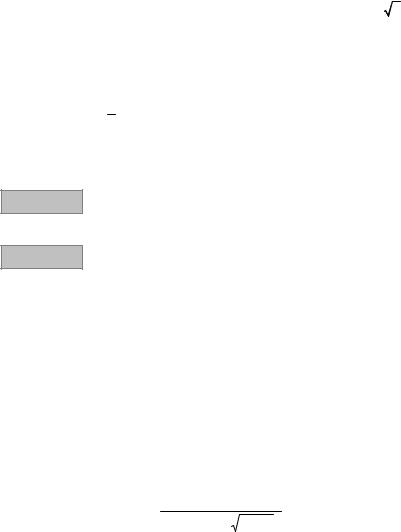
For example, 1− cos x is the infinitesimal of the second order relative to |
x |
||||||||||||||||
|
1− cos x = |
|
2sin |
2 x |
|
= 1 lim |
sin |
2 x |
|
= 1 |
|
|
|
|
|||
because lim |
lim |
|
2 |
|
|
2 |
|
, x3 |
and |
x |
are |
||||||
x2 |
|
|
2 |
|
|||||||||||||
x→0 |
x2 |
x→0 |
|
2 x→0 x |
2 |
|
|
|
|
||||||||
|
|
|
|
|
|
|
|
|
|
|
|
|
|
|
|
|
|
|
|
|
|
|
|
|
|
|
|
|
|
|
|
||||
|
|
|
|
|
|
|
|
2 |
|
|
|
|
|
|
|
||
infinitesimals of the third and 0.5 orders relative to x correspondingly.
The remark. The comparison of infinitely large magnitudes is performed similarly to comparison of infinitesimals. Slight difference exists in terms so, if
lim uv = 0 i.e. lim uv = ∞, where magnitudes u and v are infinitely large
magnitudes we say that u is of lower order than v, and v is of higher order than u .
In practical of calculation of limits two theorems about equivalent infinitesimals and infinitely large magnitudes are widely applied.
The limit of a ratio of two infinitesimals will not change by substitution of these infinitesimals by their equivalents.
The similar statement is true for infinitely large magnitudes.
Theorem 3.9 The sum of infinitesimals of different orders is equivalent to its term of the lowest order.
The sum of infinitely large magnitudes of different orders is equivalent to its term of the highest order.
The most important equivalences which follow from formulas (3.2) and (3.3) are:
x sin x tg x arcsin x arctg x ex − 1 ln (1+ x), |
(3.5) |
||||
1− cos x |
1 x2 |
, ax − 1 x ln a, (1+ x)k |
− 1 kx. |
||
|
|||||
|
2 |
|
|
|
|
Micromodule 15
EXAMPLES OF PROBLEMS SOLUTION
Example 1. Evaluate |
lim |
lncos 4x+e5x3 |
− 1−2x 4 |
|
|
|
. |
||
|
x→0 arctg 2 3x−73 sin 8 x |
|||
Solution. We have an indeterminacy |
0 |
|
||
0 |
. |
|||
|
|
|
|
|
Using Theorems 3.8 and 3.9, and equivalences (3.5) we get:
lncos 4x = ln(1+ cos 4x − 1) = ln(1 − 2sin 2 2x) ~ − 2 sin 2 2x ~ − 8x2 ,
182
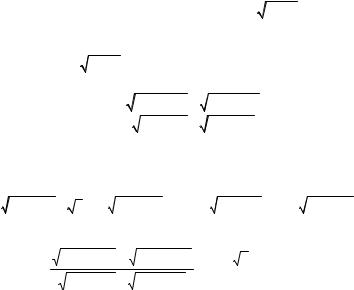
|
|
e5x3 −1 ~ 5x3 ; arctg2 3x |
|
~ 9x2 , |
|
|
|
|
|
|
|
|
|
8 |
|
|
|
|
|
|
|
|||||||||||||
|
|
|
3 sin8 x |
|
~ x |
3 |
, |
|
|
|
|
|||||||||||||||||||||||
|
|
ln cos 4x + e5x3 − 1− 2x4 |
|
|
|
−8x2 + 5x3 − 2x4 |
|
−8x2 |
|
8 |
|
|
|
|||||||||||||||||||||
i.e. |
lim |
|
|
|
|
|
|
|
= |
lim |
|
|
|
|
|
|
= lim |
|
|
|
|
|
|
|
= − |
9 |
. |
|
|
|||||
|
x→0 arctg2 3x − 73 sin8 x |
|
|
|
|
x→0 |
|
|
8 |
|
|
|
|
x→0 |
9x |
2 |
|
|
|
|
|
|
|
|
||||||||||
|
|
|
|
|
|
9x2 − 7x3 |
|
|
|
|
|
|
|
|
|
|
|
|
|
|||||||||||||||
|
Example 2. Evaluate |
lim |
4 3n3 − 4n2 + 3 5n2 − 8n3 |
. |
|
|
|
|
|
|
|
|
|
|
|
|
|
|
|
|
||||||||||||||
|
|
|
|
|
|
|
|
|
|
|
|
|
|
|
|
|||||||||||||||||||
|
|
|
|
|
|
n→∞ |
|
|
9n2 + 7n − 5 n4 + 6n3 |
|
|
|
|
|
|
|
|
|
|
|
|
|
|
|
|
|
|
|
||||||
|
Solution. We have an indeterminacy ∞ |
. |
|
|
|
|
|
|
|
|
|
|
|
|
|
|
|
|
|
|
|
|||||||||||||
|
|
|
|
|
|
|
|
|
|
|
|
|
∞ |
|
|
|
|
|
|
|
|
|
|
|
|
|
|
|
|
|
|
|
|
|
|
Let us open it by means of Theorems 3.8 and 3.9. |
|
|
|
|
|
|
|
|
|
|
|
|
|
|
|
|
4 |
|
|||||||||||||||
|
|
|
|
|
3 |
|
|
|
|
|
|
|
|
|
|
|
|
|
|
|
|
|
|
|
|
|
|
|
|
|
|
|
||
|
As 4 3n3 − 4n2 ~ 4 3n4 ; |
3 5n2 − 8n3 ~ − 2n; 9n2 + 7n ~ 3n; 5 n4 + 6n3 ~ n |
5 |
, |
||||||||||||||||||||||||||||||
then |
|
|
|
|
|
|
|
|
|
|
|
|
|
|
|
|
|
|
|
|
|
|
|
|
|
|
|
|
|
|
|
|
|
|
|
|
|
|
|
|
|
|
|
|
|
|
|
|
|
|
3 |
|
|
|
|
|
|
|
|
|
|
|
|
|
|
|
|
|
|
|
|
4 |
3n3 |
− 4n 2 + 3 |
5n |
2 − 8n3 |
|
4 3n |
4 − 2n |
|
|
2 |
|
|
|
|
|
|
|
|
||||||||||||||
|
|
lim |
|
|
|
|
|
|
|
|
|
|
= lim |
|
|
|
|
|
|
|
= − |
|
|
|
. |
|
|
|
|
|
||||
|
|
|
2 |
|
|
5 |
|
4 |
|
|
|
|
4 |
|
|
3 |
|
|
|
|
|
|||||||||||||
|
|
n→∞ |
9n |
+ |
7n − |
n |
+ 6n |
3 |
n→∞ |
|
|
|
|
|
|
|
|
|
|
|
|
|||||||||||||
|
|
|
|
|
|
|
|
|
3n − n 5 |
|
|
|
|
|
|
|
|
|
|
|
|
|
||||||||||||
|
|
|
|
|
|
|
|
|
|
|
|
|
|
|
|
|
|
|
|
|
|
|
|
|
|
|
|
|||||||
Example 3. Compare infinitesimals α(x) = x2 + 3x + 2 and β(x) = tg(x + 1)
if x → −1.
Solution. Let us evaluate limit of quotient of the given functions:
|
x2 + 5x + 4 |
|
0 |
|
x2 + 5x + 4 |
= |
|
lim |
|
= |
|
|
= lim |
|
|
x→−1 |
tg(x + 1) |
|
0 |
|
x→−1 |
x + 1 |
|
|
|
= lim |
(x + 1)(x + 4) |
= lim (x + 4) = 3 , |
|
|
|
||||||||||||||||
|
|
|
|
x + 1 |
|
|
|
|
|||||||||||||||
|
|
|
x→−1 |
|
|
|
x→−1 |
|
|
|
|
|
|
|
|||||||||
that is, the functions α(x) |
і β(x) |
|
if x → −1 are infinitesimals of the same order. |
||||||||||||||||||||
Example 4. Compare infinitesimals α(x) = x arctg x−2 |
and β(x) = (x − 3)−1/ 3 |
||||||||||||||||||||||
if x → ∞ . |
|
|
|
|
|
|
|
|
|
|
|
|
|
|
|
|
|
|
|
|
|
|
|
Solution. Let us evaluate limit of quotient of the given functions: |
|
|
|||||||||||||||||||||
|
|
|
x arctg x−2 |
|
= |х–3~х| = lim |
x arctg x−2 |
|
|
|
||||||||||||||
|
lim |
|
|
|
|
|
|
|
|
|
|
|
= |
|
|
|
|||||||
|
|
|
|
|
|
|
|
|
x−1/ 3 |
|
|
|
|
||||||||||
|
x→∞ (x − 3)−1/ 3 |
|
|
|
|
|
|
x→∞ |
|
|
|
|
|
||||||||||
|
arctg x−2 |
|
x |
−2 |
= t |
|
|
arctg t |
|
|
t |
= lim t |
1/ 3 |
|
|
||||||||
|
|
|
|
|
|
|
|
||||||||||||||||
= lim |
|
|
|
= |
|
|
|
= lim |
|
|
|
= lim |
|
|
= 0 |
, |
|||||||
x−4 / 3 |
|
|
|
|
|
|
|
|
|
||||||||||||||
x→∞ |
|
|
|
|
|
|
|
|
|
t→0 t2 / 3 |
|
|
t→0 t2 / 3 |
t→0 |
|
|
|
||||||
|
|
|
|
|
|
|
|
|
|
|
|
|
|
||||||||||
that is, α(x) = O(β(x)) if |
x → ∞ . |
|
|
|
|
|
|
|
|
|
|
|
|||||||||||
|
|
|
|
|
|
|
|
|
|
|
|
|
|
|
|
|
|
|
|
|
|
|
183 |
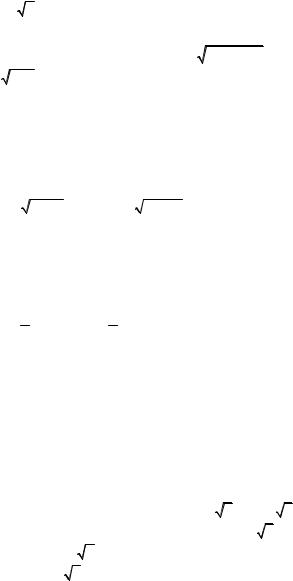
Micromodule 15
CLASS AND HOME ASSIGNMENT
Evaluate limits using equivalents.
1. lim |
ln cos x + ex − cos x − x2 |
. |
|
2. |
lim |
ln(10 − x2 ) |
. |
|
|
||||||||
|
arcsin2x+arctg2 3x − x4 |
|
sin 2π x |
|
|
||||||||||||
|
x→0 |
|
|
|
|
|
x→3 |
|
|
|
|||||||
3. |
lim |
|
cos x (e3x − 1) |
. |
|
|
|
|
4. |
lim |
x |
2 − 4x + 1 − 1 |
. |
||||
|
x→0 |
|
|
4 1+ x − 1 |
|
|
|
|
|
|
|
x→0 |
|
tg π x |
|
|
|
Compare infinitesimals. |
|
|
|
|
|
|
|
|
|
|
|
|
|||||
5. |
α(x) = x2 + 6x + 8 |
and β(x) = tg(x + 2) |
if |
x → −2 . |
|
|
|
||||||||||
6. |
α(x) = |
arcsin2 (x − 3) |
and β(x) = x |
3 |
− 7x − 6 |
if x → 3. |
|
||||||||||
x + 1 |
|
|
|
||||||||||||||
|
|
|
|
|
|
|
|
|
|
|
|
|
|
|
|
|
|
7. |
α(x) = x4 − 5x2 + 4 and |
β(x) = x2 − 8x + 7 |
if |
x → 1 . |
|
||||||||||||
8. |
α(x) = 3 − 3 x + 20 |
and |
β(x) = 3 2x + 13 − 3 if x → 7 . |
|
|||||||||||||
9. |
α(x) = x2 − 1 and |
β(x) = 2 ln x |
if |
x → 1 . |
|
|
|
|
|
||||||||
10. α(x) = 3tg x − 3− tg x ; β(x) = sin2 |
x |
|
if |
x → 0 . |
|
|
|
||||||||||
Answers
1.–0,5. 2. −π3 . 3. 12. 4. −π2 . 5. α(x) = О(β(x)) . 6. α(x) = о(β(x)) .
7.α(x) ~ β(x) . 8. α(x) = О(β(x)) . 9. α(x) ~ β(x) . 10. β(x) =о( α(x) ).
Micromodule 15
SELF–TEST ASSIGNMENTS
15.1. Evaluate limits using equivalents.
15.1.1. a) lim |
|
|
1− cosπ x |
|
; |
b) |
lim |
(1+ 2x)5 |
− 1 |
. |
|
|
||||
|
x→0 ln(1− x) tg π x |
|
|
|
x→0 |
e3x − 1 |
|
|
|
|||||||
15.1.2. a) lim |
tg3 |
2x − sin x4 |
|
; |
b) |
lim |
|
x + ln(1+ x ) |
. |
|||||||
|
|
x3 |
|
|
sin |
x |
|
|
||||||||
|
x→0 |
|
|
|
|
|
x→0 |
|
|
|
||||||
15.1.3. a) |
lim |
|
ln(1+ sin 3 x ) |
; |
b) |
|
|
2x3 − 2x |
+ 3x |
|
||||||
|
|
|
|
lim |
|
|
|
|
. |
|
||||||
|
x→0 |
|
|
tg(23 x ) |
|
|
|
x→0 |
ex − |
1 |
|
|
|
|||
184
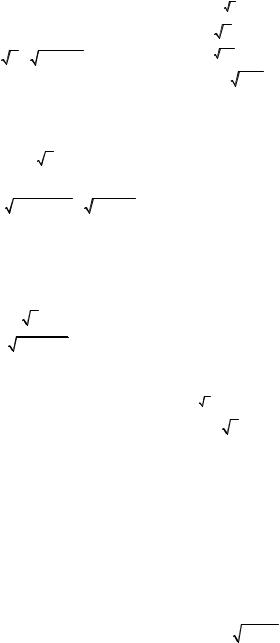
15.1.4. a) lim |
1− cos (1− cos x) |
; |
|
|
|
b) lim |
x2 + e |
x |
|
− 1 |
. |
|
|
|
|
||||||||||||||||||||||
|
|
|
|
|
|
|
|
|
|
|
|
|
|
|
|
|
|
|
|
|
|
||||||||||||||||
|
x→0 |
|
|
arcsin x2 |
|
|
|
|
|
|
|
|
x→0 |
|
|
|
x |
|
|
|
|
|
|
|
|
|
|
||||||||||
15.1.5. a) lim |
|
|
|
2 − |
|
1+ cos x |
|
; |
|
|
|
|
|
b) |
lim |
|
|
|
2 x+1 − 1 |
. |
|
|
|
||||||||||||||
|
x→0 |
|
|
sin2 |
|
x |
|
|
|
|
|
|
|
|
|
|
x→−1 arcsin 3 |
|
x + 1 |
|
|
|
|
||||||||||||||
15.1.6. a) |
lim |
arcsin 5x − arcsin 3x |
; |
|
b) |
lim |
(2 + x)3 − 8 |
. |
|
|
|
|
|||||||||||||||||||||||||
|
x→0 |
|
|
arctg2x + arctgx |
|
|
|
|
x→0 |
|
ln 1+ x |
) |
6 |
|
|
|
|
|
|
|
|
||||||||||||||||
|
|
|
|
|
|
|
|
|
|
|
|
|
|
|
|
|
|
|
|
|
|
|
|
|
|
( |
|
|
|
|
|
|
|
|
|
|
|
15.1.7. a) |
lim |
x + tg |
|
x − 2 sin x |
; |
|
|
b) |
lim |
|
ex |
− e−2x |
|
. |
|
|
|
|
|
|
|
|
|||||||||||||||
|
|
x + x2 |
+ tg x |
|
|
|
|
|
|
|
|
tg x |
|
|
|
|
|
|
|
|
|
|
|||||||||||||||
|
x→0 |
|
|
|
|
|
|
|
|
|
x→0 |
|
|
|
|
|
|
|
|
|
|
|
|
|
|
||||||||||||
15.1.8. a) |
lim |
|
|
1+ arcsin x − |
|
|
1− sin x |
; b) lim |
ex |
− e + ln(2 − x2 ) |
. |
||||||||||||||||||||||||||
|
|
|
|
|
|
|
|
tg x |
|
|
|
|
|
|
|
|
|
|
2x2 |
− |
3x + 1 |
|
|||||||||||||||
|
x→0 |
|
|
|
|
|
|
|
|
|
|
|
|
|
|
|
|
x→1 |
|
|
|
|
|
||||||||||||||
15.1.9. a) |
lim |
ln(ex |
+ x sin x) |
|
; |
|
|
|
|
|
b) |
lim |
|
sin(tg5x − tgx) |
|
|
|||||||||||||||||||||
|
x→0 |
|
|
ln(1+ tgx) |
|
|
|
|
|
|
|
|
x→0 |
|
|
arcsin tg2x |
|
|
|
|
|||||||||||||||||
15.1.10. a) lim |
|
sin2 x − x |
; |
|
|
|
|
|
|
|
b) |
lim |
|
arcsin(tg x − x) |
. |
|
|||||||||||||||||||||
|
|
|
x + x |
|
|
|
|
|
|
|
|
|
ln(1+ sin x) |
|
|
|
|||||||||||||||||||||
|
|
x→0 tg |
|
|
|
|
|
|
|
|
|
|
x→0 |
|
|
|
|
|
|
||||||||||||||||||
15.1.11. a) lim |
|
|
1+ x sin x − 1 |
; |
|
|
|
|
|
b) |
lim |
|
ex |
− 2− x |
. |
|
|
|
|
|
|
|
|
||||||||||||||
|
|
|
|
|
|
|
x |
|
|
|
|
|
|
|
|
|
|
sin x |
|
|
|
|
|
|
|
|
|
||||||||||
|
|
x→0 |
|
|
|
tg |
2 |
|
|
|
|
|
|
|
|
|
|
|
x→0 |
|
|
|
|
|
|
|
|
|
|
|
|
|
|||||
|
|
|
|
|
|
|
|
|
2 |
|
|
|
|
|
|
|
|
|
|
|
|
|
|
|
|
|
|
|
|
|
|
|
|
|
|
||
|
|
|
|
|
|
|
|
|
|
|
|
|
|
|
|
|
|
|
|
|
|
|
|
|
|
|
|
|
|
|
|
|
|
|
|
|
|
15.1.12. a) |
lim |
|
sin (tg5x − tgx) |
; |
|
|
|
b) |
lim |
2 |
x − cos x |
. |
|
|
|
|
|||||||||||||||||||||
|
|
|
|
|
|
|
|
|
|
|
|
||||||||||||||||||||||||||
|
|
x→0 |
|
arcsin tg2x |
|
|
|
|
|
|
|
|
x→0 |
|
|
|
sin |
x |
|
|
|
|
|
|
|
|
|
|
|||||||||
15.1.13. a) |
lim |
|
sin x + sin 2x − sin 3x |
; |
b) |
lim |
|
|
2x−1 − 1 |
|
. |
|
|
|
|
|
|||||||||||||||||||||
|
|
3x2 |
|
|
|
|
|
|
|
|
|
|
|
|
|
− 3x + |
2 |
|
|
|
|
|
|||||||||||||||
|
|
x→0 |
|
|
|
|
(1+ x) |
|
|
x→1 x2 |
|
|
|
|
|
|
|
|
|||||||||||||||||||
|
|
|
|
|
|
e |
|
|
|
− 1 ln |
|
|
|
|
|
|
|
|
|
|
|
|
|
|
|
|
|
|
|||||||||
|
|
|
|
|
|
|
|
|
|
|
|
|
|
|
|
|
|
|
|
|
|
|
|
|
|
|
|
|
|
|
|
|
|
|
|
|
|
15.1.14. a) lim |
|
sin2 (x − 1) |
; |
|
b) |
lim |
sin |
2 x + sin2 2x − sin2 3x |
. |
||||||||||
|
|
|
|
|
|
|
|
|
( |
|
|
|
|
) |
|||||
x→1 x2 − 3x + 2 |
|
|
|
x→0 (e− x |
|
|
+ sin x |
|
|||||||||||
|
|
|
− 1) ln 1 |
|
|
||||||||||||||
15.1.15. a) lim |
3x2 − 5x |
; |
|
|
b) |
lim |
1− cos10x |
. |
|
|
|
|
|
|
|||||
x→0 |
|
sin 3x |
|
|
|
|
x→0 |
e |
x2 |
− 1 |
|
|
|
|
|
|
|
||
|
|
|
|
|
|
|
|
|
|
|
|
|
|
|
|
|
|||
15.1.16. a) lim |
|
tg3x + tgx − sin 2x |
; |
b) |
lim |
|
|
3x+1 − 3 |
|
|
|
. |
|
|
|||||
|
sin x − sin 5x |
ln (1+ x 1+ xe |
|
|
) |
|
|
||||||||||||
x→0 |
|
|
|
x→0 |
x |
|
|
|
|||||||||||
|
|
|
|
|
|
|
|
|
|
|
|
|
|
||||||
185
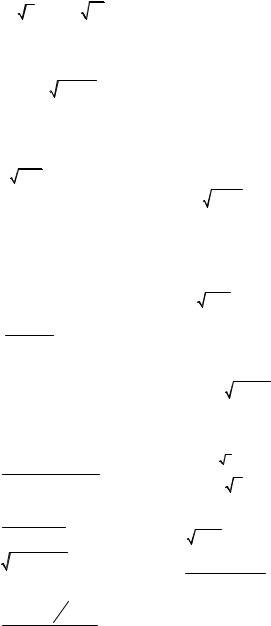
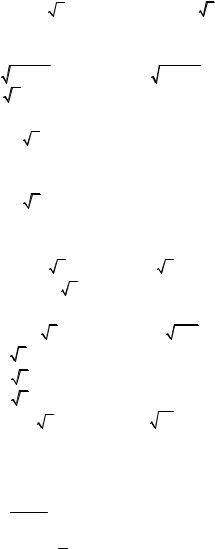
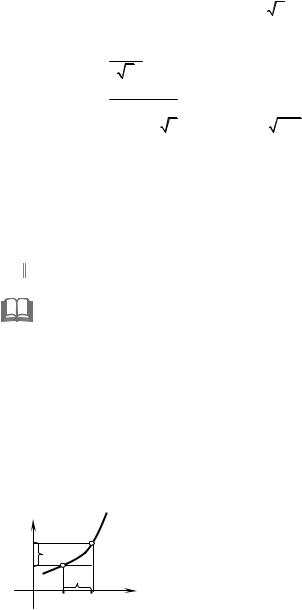

2) The ratio of two functions ϕf ((xx)) , continuous at a point c , is a function, continuous at this point provided ϕ (c) ≠ 0 ;
3)a composite function formed from a finite number of continuous functions is continuous;
4)a function inverse to a monotone continuous function is continuous.
The basic elementary functions are continuous at all points where they are determined. So from properties of continuous functions the next important conclusion follows: any elementary function is continuous at each point where it is determined.
If one of conditions (1—3) of continuity of a function is not carried out at a point c then the point c is said to be a point of discontinuity of the function
y = f (x).
16.2. Classification of points of discontinuity
We have to distinguish three cases:
i) the limit of a function at point c exists, but the function is not determined
at this point or lim f (x) ≠ f (c) then c is said to be a point of removable
x→c
discontinuity;
ii) there exist finite limits of the function from the left and from the right but f (c − 0) ≠ f (c + 0) then this point c is said to be a point of essential discon-
tinuity or of the first kind;
iii) there do not exist finite limits of the function from the left or from the right at the point x = c (in particular, c may be equal to infinity) then c is said to be a point of infinite discontinuity or of the second kind.
Micromodule 16
EXAMPLES OF PROBLEMS SOLUTION
Example 1. Investigate the function for continuity:
f (x) = |
x + 2 |
|
|
. |
|
3x2 + 5x − 2 |
||
Solution. The function is determined on all the numerical axis, except the points where a denominator is equal to zero, i.e.
3x2 + 5x − 2 = 0 .
189
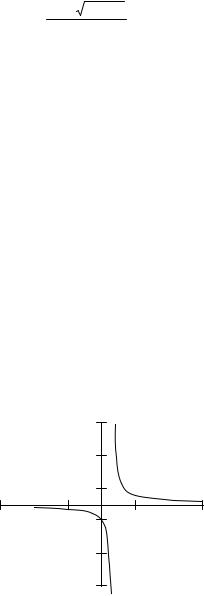
Solving this equation we obtain:
|
|
|
|
|
|
x = |
− 5 ± 25 + 24 |
= |
−5 ± 7 |
, |
|
|
|
|
|
|
6 |
6 |
|||
|
|
|
|
|
|
|
|
|
||
i.e. |
x |
= −2 x |
2 |
= |
1 |
. They are points where the function is not determined i.e. it |
||||
|
||||||||||
|
1 |
|
3 |
|
|
|
|
|
||
has discontinuities. We have to find the limits of the function at these points:
lim |
x + 2 |
= lim |
x + 2 |
|
= − |
1 |
, |
|
(3x − 1)(x + 2) |
7 |
|||||
x→−2 3x2 + 5x − 2 |
x→−2 |
|
|
||||
i.e. the point x = −2 is a point of removable discontinuity.
Having accepted |
f (−2) = − 1 we shall get a continuous function. |
|||||||||||
For x = 1 |
|
|
7 |
|
|
|
|
|
|
|
||
we have: |
|
|
|
|
|
|
|
|
|
|||
2 |
3 |
|
|
|
|
|
|
|
|
|
|
|
|
|
|
|
|
|
|
|
|
|
|
|
|
|
|
|
lim |
|
x + 2 |
|
= |
lim |
|
1 |
|
= + ∞ ; |
|
|
|
3x2 + 5x − 2 |
|
3x − 1 |
|||||||
|
|
x→ 1 +0 |
|
x→ 1 +0 |
|
|
||||||
|
|
|
3 |
|
|
|
|
3 |
|
|
|
|
|
|
|
lim |
|
x + 2 |
= |
lim |
1 |
|
= − ∞ , |
||
|
|
|
|
3x2 + 5x − 2 |
3x − 1 |
|||||||
|
|
|
x→ 1 −0 |
|
|
x→ 1 −0 |
|
|||||
|
|
|
3 |
|
|
|
|
3 |
|
|
|
|
i.e., the point |
x = 1 |
is a point of infinite discontinuity. The graph of this func- |
||||||||||
3
tion is represented on Fig. 3.11.
5
3
1
– 3 |
– 1 –1 |
1 |
3 |
–3
–5
Fig. 3.11
190
